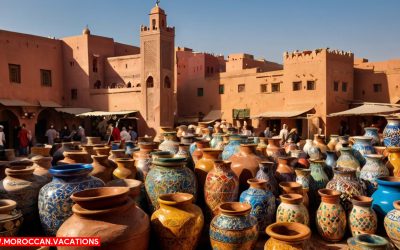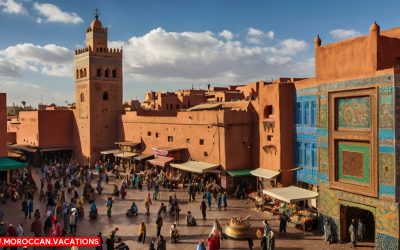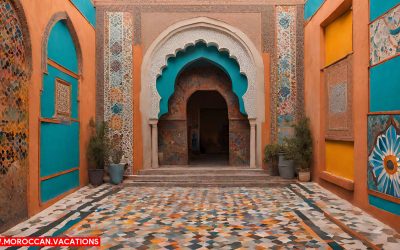Patterns and Their Symbolic Meanings
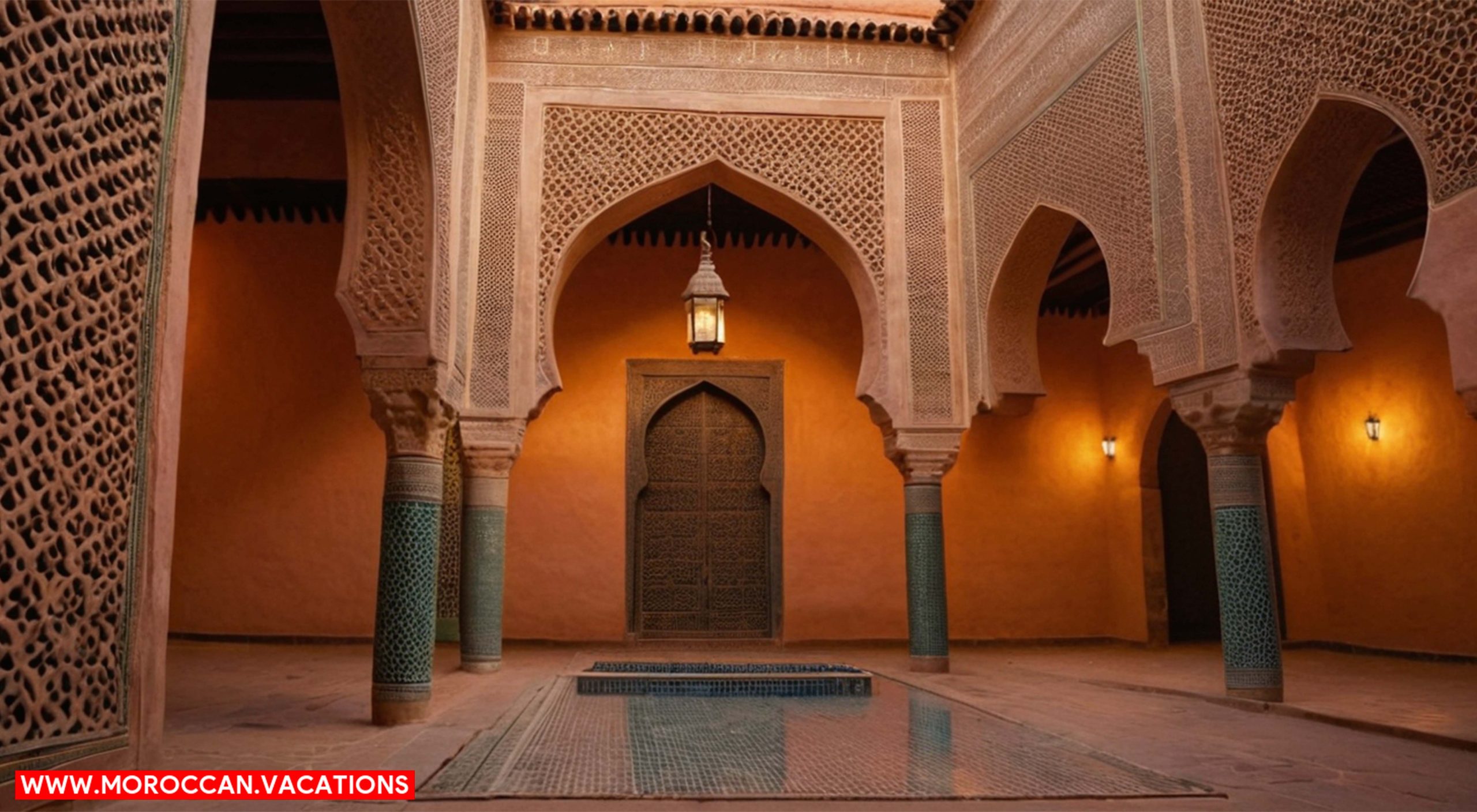

Did you know that every intricate detail in Marrakesh’s architecture holds a symbolic meaning? From the mesmerizing patterns to the vibrant colors, each element tells a story deeply rooted in the city’s rich cultural heritage. As you wander through the archways, you’ll feel like you’re stepping into another world, guided by sacred symbols that have stood the test of time. In this article, we will explore the hidden symbolism behind Marrakesh’s architectural details, unveiling a world of meaning waiting to be discovered.
As you explore Marrakesh’s architectural details, you will notice that the intricate patterns woven into the buildings hold significant symbolic meanings. These symbolic motifs, meticulously crafted with traditional craftsmanship, serve as a visual language that conveys cultural values and beliefs. Marrakesh’s architecture is a testament to the rich history and deep-rooted traditions of the city.
The patterns found in Marrakesh’s architecture are not merely decorative; they carry profound symbolism that reflects the spiritual and social aspects of Moroccan society. For example, the geometric patterns commonly seen in the zellige tilework represent unity and balance. These patterns, created by skilled artisans using traditional techniques, are a testament to the meticulous craftsmanship and attention to detail that is highly valued in Moroccan culture.
In addition to geometric patterns, Marrakesh’s architecture also features motifs inspired by nature, such as floral designs and intricate calligraphy. These motifs symbolize beauty, harmony, and the interconnectedness of all living beings. The use of such motifs in architectural design not only adds aesthetic appeal but also serves as a constant reminder of the importance of nature and our connection to the natural world.
The symbolic meanings embedded in Marrakesh’s architectural details add depth and significance to the city’s built environment. They provide a glimpse into the values and beliefs of the Moroccan people, while also showcasing the exceptional craftsmanship that has been passed down through generations. The intricate patterns and symbolic motifs found in Marrakesh’s architecture are a testament to the city’s rich cultural heritage and serve as a reminder of the importance of preserving and celebrating traditions.
The Significance of Geometric Shapes
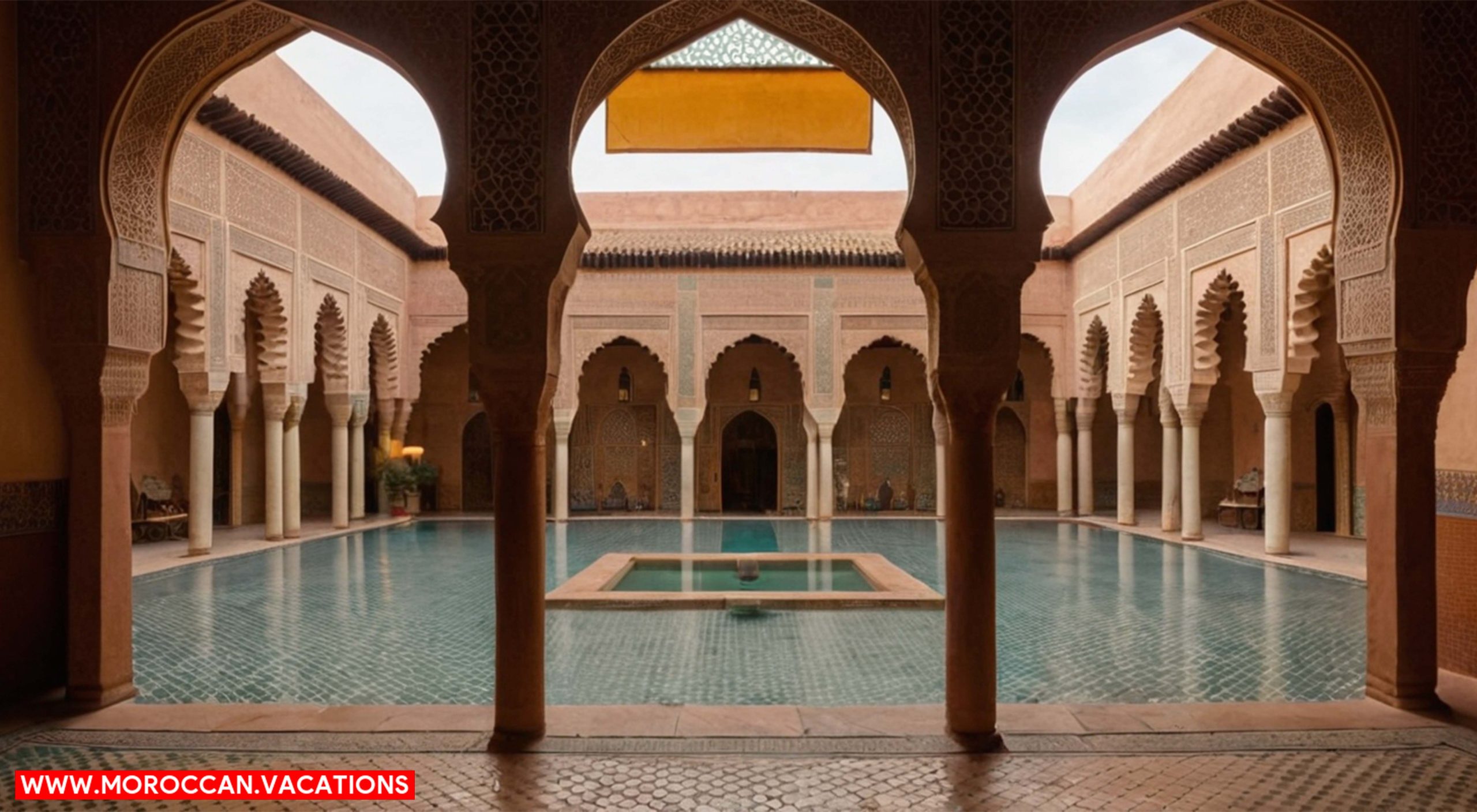

Geometric shapes in Marrakesh’s architecture hold significant meaning and serve as a visual representation of unity and balance. These shapes are not merely decorative elements but carry cultural interpretations and spiritual significance. Here are three ways in which geometric shapes are significant in Marrakesh’s architecture:
- Symbolic representation: Geometric shapes such as circles, squares, and triangles are used in architectural details to symbolize various aspects of Moroccan culture and spirituality. Circles, for example, represent infinity and wholeness, reflecting the belief in the interconnectedness of all things. Squares symbolize stability and structure, while triangles signify harmony and balance.
- Visual harmony: The use of geometric shapes in Marrakesh’s architecture creates a sense of visual harmony and balance. The repetition of shapes and patterns throughout buildings and decorative elements creates a cohesive and unified aesthetic. This harmony extends beyond the physical structures and is believed to bring balance and positive energy to the spaces.
- Spiritual significance: Geometric shapes in Marrakesh’s architecture are often associated with spiritual beliefs and practices. The intricate patterns and shapes seen in mosques, for example, are not just decorative but are meant to inspire contemplation and connection with the divine. The repetition and precision required to create these geometric designs are seen as a form of meditation and a way to connect with the spiritual realm.
Colors and Their Cultural Significance
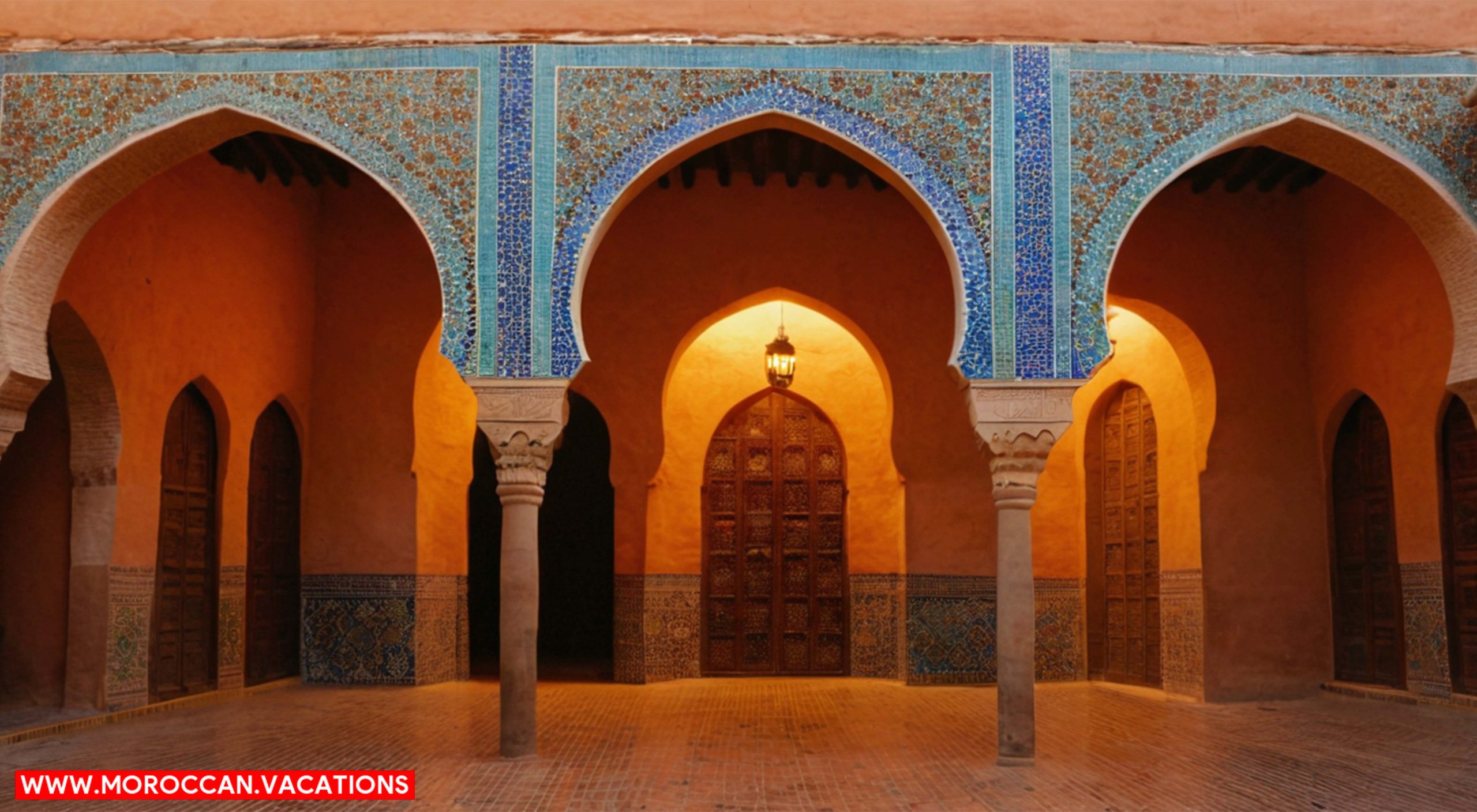

Immerse yourself in Marrakesh’s architectural details and discover the cultural significance of colors. In Marrakesh, colors play a vital role in the symbolism of materials and traditional motifs used in the city’s architecture. Each color carries meaning and reflects the rich cultural heritage of Morocco.
One of the most prominent colors seen in Marrakesh’s architecture is blue. Blue represents spirituality and protection against evil spirits. It is often used in the intricate zellige tilework found in palaces and mosques. The vibrant blue hues create a sense of tranquility and peace within these sacred spaces.
Another significant color is green, which symbolizes nature and fertility. Green can be seen in the lush gardens and courtyards that are integral to Marrakesh’s architecture. The use of green highlights the city’s connection to the natural world and its reverence for the environment.
Red is a color that represents strength and power. It is commonly used in the vibrant textiles and carpets found in Marrakesh’s souks. The bold red hues evoke a sense of energy and vitality, reflecting the city’s bustling atmosphere and vibrant culture.
Yellow is associated with wealth and prosperity. It can be found in the intricate gold details adorning palaces and riads. The use of yellow signifies opulence and luxury, showcasing Marrakesh’s historical affluence.
Archways: Portals to Another World
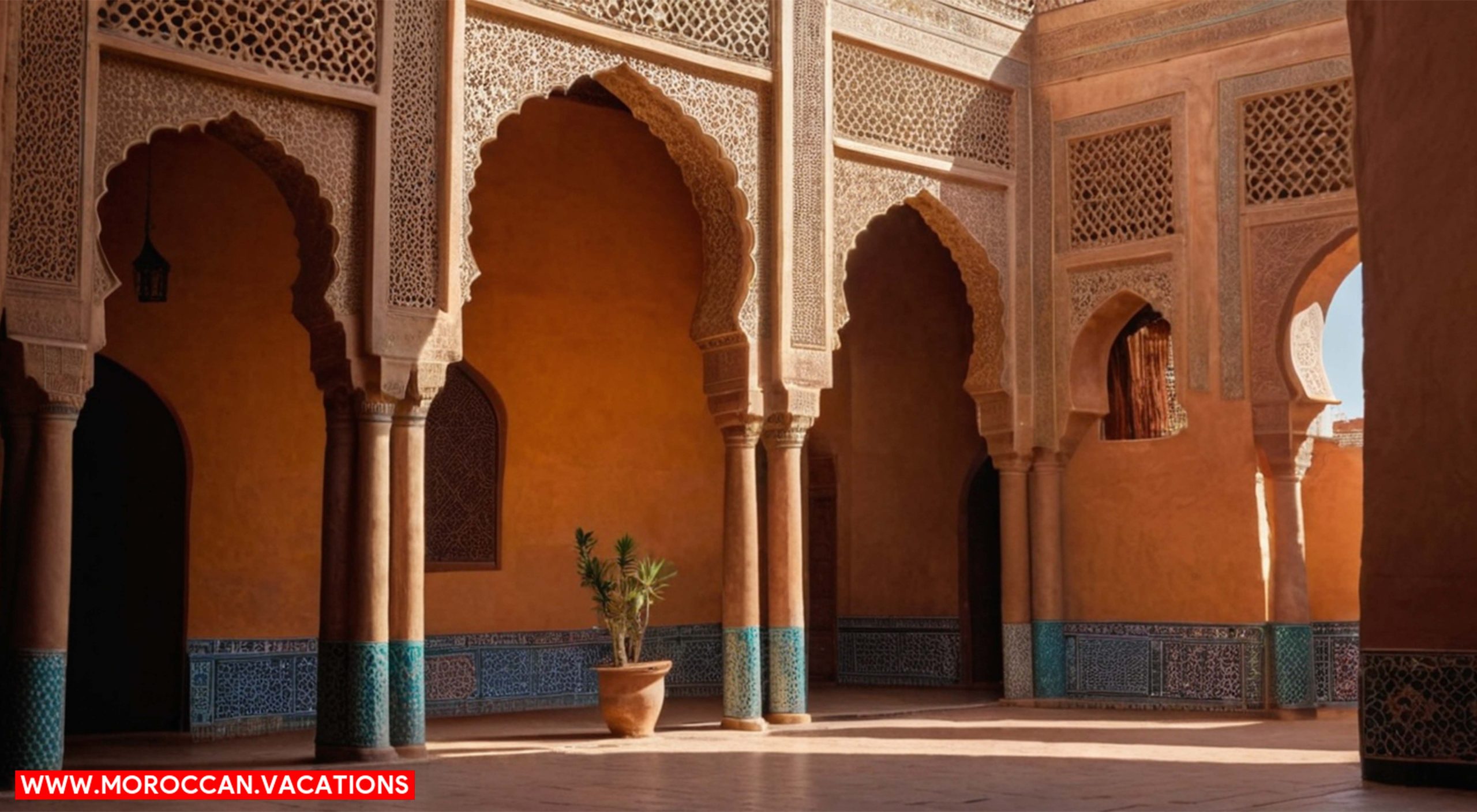

Step through the archways of Marrakesh’s architecture and you will frequently find yourself transported to another world. These architectural symbols, influenced by the rich cultural heritage of Morocco, hold deep meaning and significance. Here’s a closer look at how archways in Marrakesh’s architecture serve as portals to another world:
- Architectural Symbolism: Archways in Marrakesh’s architecture symbolize the transition from one space to another. They represent a passage from the mundane to the extraordinary, inviting you to leave the ordinary behind and embrace the enchanting beauty of Marrakesh.
- Cultural Influences: The archways in Marrakesh’s architecture are a reflection of the city’s diverse cultural influences. From Islamic to Andalusian, Berber to Moorish, these archways showcase the fusion of different architectural styles, creating a unique blend that is distinctly Moroccan.
- Aesthetic Appeal: The archways in Marrakesh’s architecture are not merely functional; they are also visually striking. With their intricate geometric patterns, ornate carvings, and vibrant colors, these archways captivate the senses and draw you into their world of beauty and wonder.
As you walk through the archways of Marrakesh’s architecture, allow yourself to be transported to another world. Experience the architectural symbolism and cultural influences that make these archways so captivating. Let your sense of freedom guide you as you explore the hidden treasures that await beyond each archway.
Sacred Symbols in Marrakesh’s Architecture
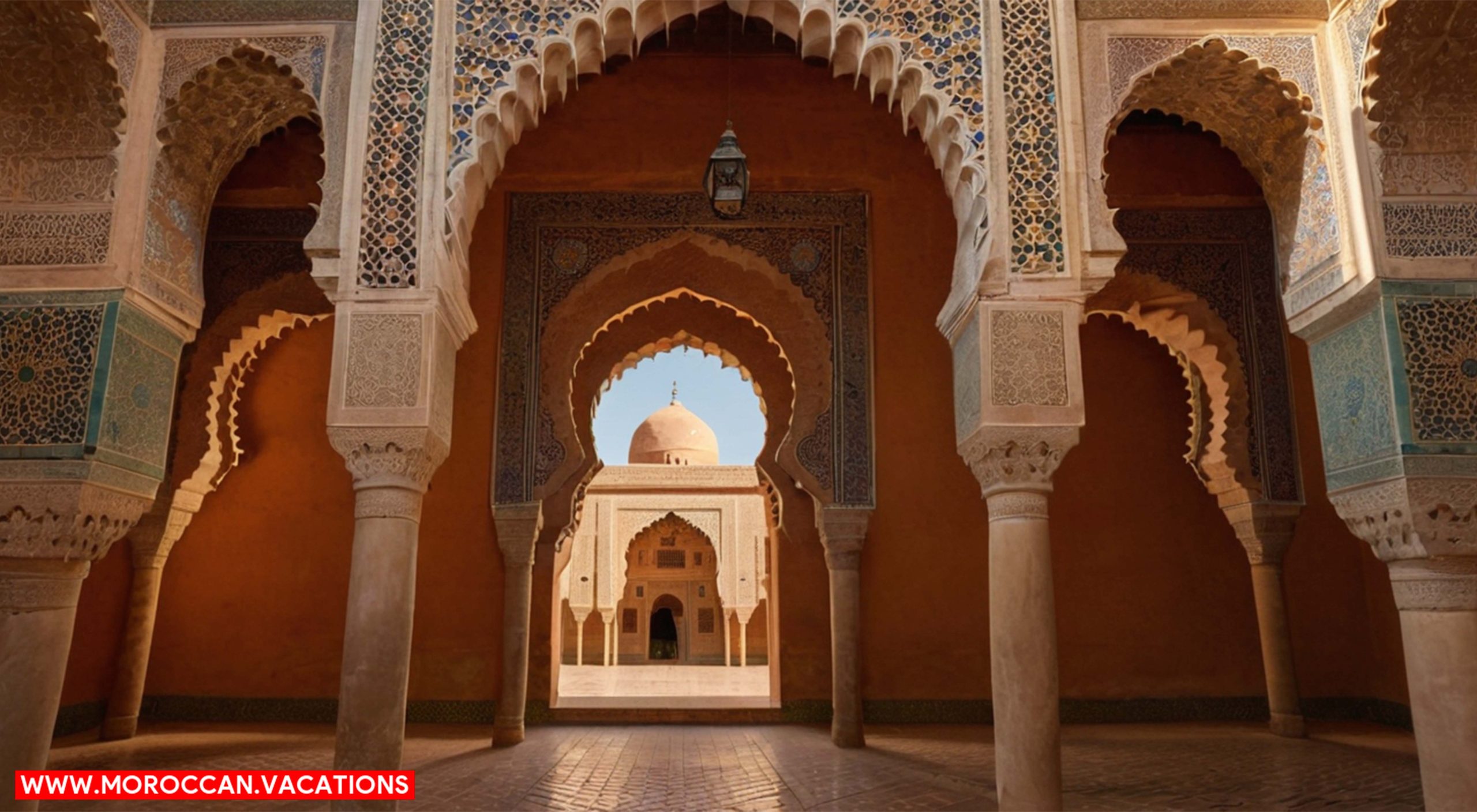

- Discover the sacred symbols woven throughout Marrakesh’s architecture, each carrying profound spiritual significance. The symbolism in Moroccan art is a testament to the rich cultural heritage of the country, with intricate designs and motifs that reflect the spiritual elements in architectural design. These symbols, found in various forms such as geometric patterns, calligraphy, and religious icons, serve as a means of communication, conveying messages of faith, protection, and transcendence.
To truly appreciate the sacred symbols in Marrakesh’s architecture, let’s explore a few examples:
| Symbol | Meaning |
| Star | Symbolizes divine light and enlightenment |
| Hand of Fatima | Represents protection against evil and negative energy |
| Key | Signifies the key to paradise and spiritual liberation |
The star, commonly known as the Star of David, is a prevalent symbol in Moroccan architecture. It represents divine light and enlightenment, guiding individuals towards spiritual awakening. The Hand of Fatima, also known as the Khamsa, is another significant symbol.
Believed to ward off evil and negative energy, it serves as a protective talisman for both homes and individuals. The key, often seen in doorways and gates, symbolizes the key to paradise and spiritual liberation, inviting individuals to embark on a journey of spiritual growth and enlightenment.
These sacred symbols in Marrakesh’s architecture not only add aesthetic beauty but also deepen the spiritual experience for those who appreciate and understand their significance. They serve as a reminder of the spiritual connection between the physical and the divine, allowing individuals to transcend their daily lives and tap into a higher state of consciousness.
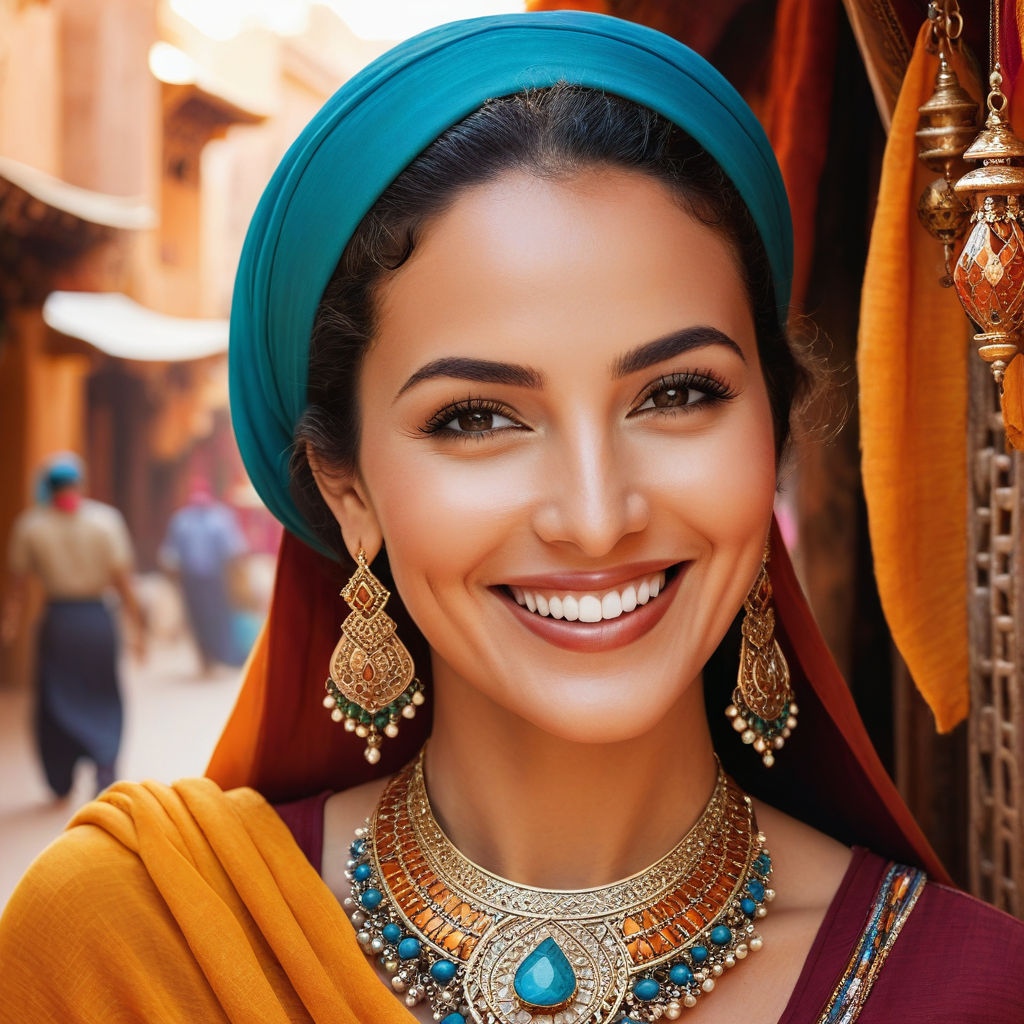

Samira Amrani
The passionate author behind Moroccan Vacations, sharing her expertise and love for Moroccan culture, cuisine, and travel experiences to inspire wanderlust in every reader.
Related Articles
Marrakesh's Art Workshops: A Hands-On Experience of Creativity
Exploring Marrakesh's Artistic Heritage Are you ready to unleash your creative potential? Look no further than Marrakesh's art workshops, where you can immerse yourself in a vibrant culture and learn new techniques and mediums. These hands-on experiences will allow...
Exploring Marrakesh's Street Art: A Vibrant Urban Canvas
The Rise of Street Art in Marrakesh If you're craving an escape from the mundane, look no further than the vibrant streets of Marrakesh. Brace yourself for a visual feast as you embark on a journey to explore the hidden world of street art. From traditional motifs to...
Moroccan Artists Making Waves in the International Art World
Explore the vibrant creativity of Moroccan artists making waves in the international art scene. From contemporary masterpieces to traditional craftsmanship, discover the diverse expressions of Morocco’s cultural heritage. Immerse yourself in a world of inspiration and innovation with our curated collection of Moroccan art.

